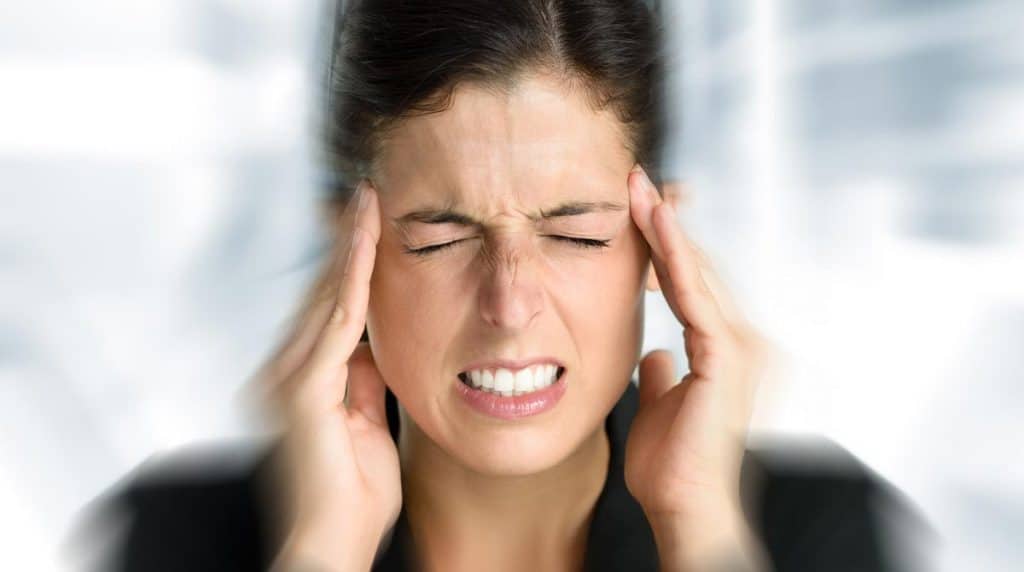Migraines

If you’ve experienced migraine, you know how the pain and other symptoms can bring everything to a halt. It’s a real, debilitating condition that negatively impacts careers, relationships and quality of life overall. The upside is there are multiple ways to control this often misunderstood disease. Read on for the latest insights.
What is migraine?
Migraine is a neurological condition with a pattern of repeated episodes (“attacks”) and specific symptoms, of which headache and nausea are the most characteristic.1
A migraine headache is usually moderate to severe, with throbbing pain often on one side of the head.2
This becomes a chronic (long-term), recurrent condition in many cases.3
Migraine differs from a normal or tension-type headache, which is typically mild or moderate and described as tightness around the head.4
Who gets migraine?
Migraines are common: globally, they’re the second-leading cause of disability and the third most prevalent illness.3,5
About 1 in 5 people will experience migraines at some point in their lives. In South Africa (population 63 million), that equates to over 12.6 million people.6.7
Migraine likely has a genetic basis, as about 90% of migraine sufferers have a family history of the condition. Onset is usually at puberty, but is most commonly experienced between ages 18 and 44 , with three times as many women as men suffering from migraine in adulthood. About 10% of children also get migraines.3
Impact on quality of life
Migraine affects many aspects of life, including work, study and leisure activities, and social and family relationships. It’s well known that migraines have a considerable negative impact during attacks, but generally patients report poorer well-being and quality of life during pain-free periods also.8
According to the Migraine Research Foundation, 71% of sufferers feel that their mental health has been damaged by migraine. One US-based study found that a third of migraine patients reported a negative effect on their careers, almost half felt they would be better partners without migraine and almost 40% said it had compromised their role as parents.6
Migraine symptoms
Migraine sufferers usually experience at least five attacks in a lifetime. These last from around four hours to three days, and the headache has at least two of the following features:2,9
- Felt one side of the head or behind the eye
- Pulsating (throbbing) pain
- Moderate or severe
- Worsened by, or makes you avoid, physical activity.
Also, during the headache you have at least one of:2
- Nausea and/or vomiting
- Light sensitivity (photophobia) and sound sensitivity (phonophobia).
In children, attacks tend to be shorter and abdominal symptoms are more likely.9
Migraine phases

Source: American Migraine Foundation.10
A migraine attack has four phases (stages):10,11,12
- Prodrome: the “pre-headache” phase that signals the start of an attack, hours, even days, before the headache. Prodrome symptoms may include mood changes, fatigue, sensitivity to light and sound, insomnia, nausea, constipation or diarrhoea, and muscle stiffness, especially in the neck and shoulders. Symptoms unique to the prodrome phase include yawning, food cravings and frequent urination.
- Aura: a temporary sensory disturbance that lasts 5-60 minutes and is usually visual, such as seeing geometric patterns, lights or blind spots. Other examples of auras are phantom smells, confusion or numbness and tingling. Aura affects 20% of migraine sufferers.
- Headache: Lasts from several hours to three days.Besides pain, headache phase symptoms can include nausea, insomnia, anxiety, and sensitivity to sound, light and smell.
- Postdrome: the “migraine hangover”, with after-effects such as fatigue, body aches, trouble concentrating, dizziness and photophobia. Even though the headache is over, you are still experiencing an attack and should avoid aggravating triggers.
Not everyone experiences all four phases with each attack, and symptoms can overlap significantly between phases.10
Understanding migraine phases helps you manage your disease. Symptoms associated with the prodrome and aura phases can serve as warning signs, so you can take action to lessen the severity of the oncoming headache. Identifying and treating an attack early on can even sometimes prevent symptoms.11
What causes migraine?
Medical scientists think that a mechanism deep in the brain becomes activated, releasing pain-producing inflammatory substances around the nerves and blood vessels of the head.1
It’s not yet understood why this happens periodically, and what brings the process – and the migraine attack – to an end.1
Migraine triggers
A migraine trigger is any factor that sets off a migraine episode. People typically have several different triggers; one isn’t always enough to prompt an attack.13
Some of the more common triggers include:13
- Stress
- Irregular sleep schedule
- Hormonal changes
- Alcohol or caffeine
- Weather changes
- Diet, especially processed foods and additives
- Dehydration
- Light
- Strong smells
- Medication overuse
- Physical factors e.g. tiredness, poor posture, tension.
Diagnosing migraine
Less than half of people with migraine consult a doctor, and the disease remains undiagnosed and undertreated in at least 50% of patients.14
If you suspect you have migraine, it’s essential to get medical advice. A confirmed diagnosis leads to appropriate treatment and the best route for managing symptoms and improving your quality of life. Your doctor will consider other medical conditions you may have alongside migraine: this is important for your treatment plan, since certain drugs can’t be taken together.15
To diagnose migraine, your doctor must identify the characteristic pattern of recurring headaches with associated symptoms. It’s helpful to keep a diary of your migraine attacks for a few weeks, including when they occurred, triggers, symptoms and any medications taken.16
There’s no specific test for migraine, but your doctor might do a physical examination and check your vision, co-ordination, reflexes and sensations to help rule out other possible causes of your symptoms.16
Treating a migraine
Treatment aims to avoid attacks when possible, manage attacks rapidly and consistently when they do occur, and restore normal functioning and quality of life. Work with your doctor to draw up an individualised treatment plan based on your specific migraine experience.8
Various effective therapies are available, including medications and lifestyle or behavioural changes.8
Medications
Non-prescription painkillers such as paracetamol, aspirin or ibuprofen may help ease symptoms, especially when taken at the first signs of an attack.17
Triptans are migraine-specific painkillers that can help reverse changes in the brain that may cause migraines. Your doctor may recommend a triptan and/or anti-nausea medication if over-the-counter medication isn’t proving effective.17
Anti-nausea medicines, or antiemetics, can be taken alongside painkillers, and may be effective even if you don’t experience nausea or vomiting.17
Combination medicines. Some combination medicines, containing both painkillers and anti-emetics, are available over-the-counter. Combining a triptan with another painkiller such as ibuprofen can also be effective.17
You may need to try different medication types or combinations before you find which work best for you.17
It’s a good idea to keep a record of your medications, as taking too many painkillers can cause a medication overuse headache. In the long term, don’t take non-prescription painkillers on more than 15 days, nor triptans or a combination of treatments on more than 10 days per month.17
Prevention and lifestyle management
Good migraine management involves both appropriate medication and following a healthy lifestyle.
Healthy lifestyle habits include a regular sleep-wake schedule, regular meals, a nutritious diet low in processed foods, regular exercise, avoiding excessive caffeine or alcohol, staying well hydrated and stopping smoking. Practising stress-relieving techniques such as mindfulness meditation or relaxation therapy is also valuable.8, 11
One of the best ways of preventing migraine is recognising your triggers, avoiding them as far as possible, and finding behaviours that help ease symptoms. For example, many people find it helpful to sleep or lie in a darkened room during an attack.17
STOP MIGRAINES AS THEY START speak to your pharmacist about SA’S NO.1 MIGRAINE TREATMENT
Related Brochures

headaches

pain-management
